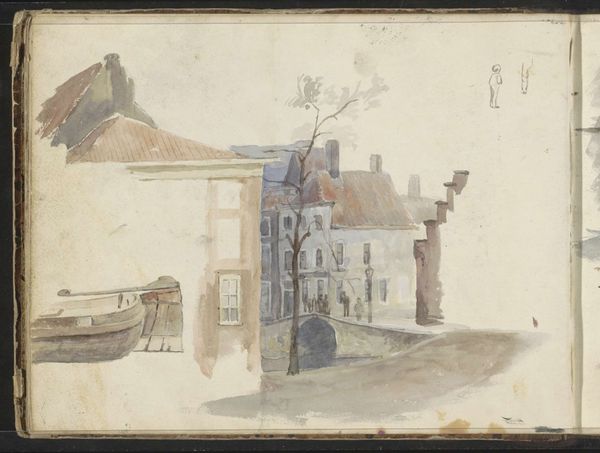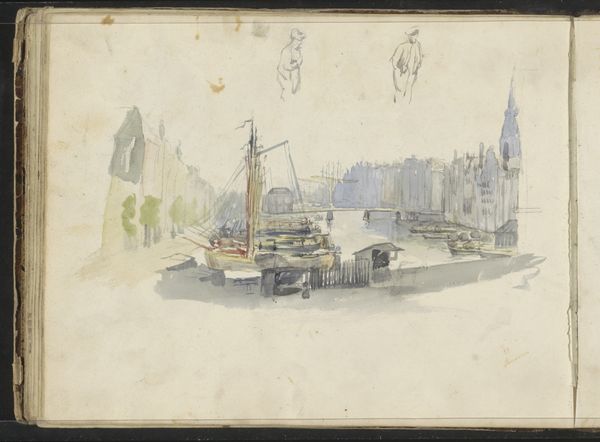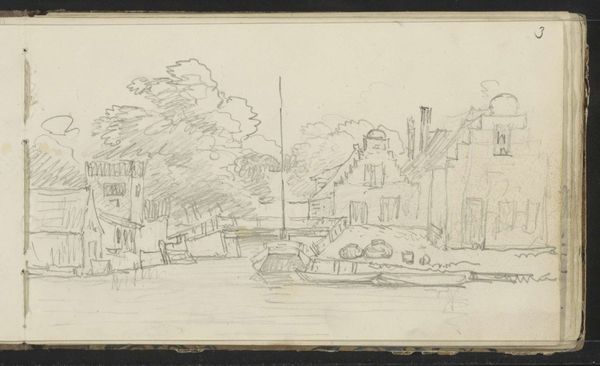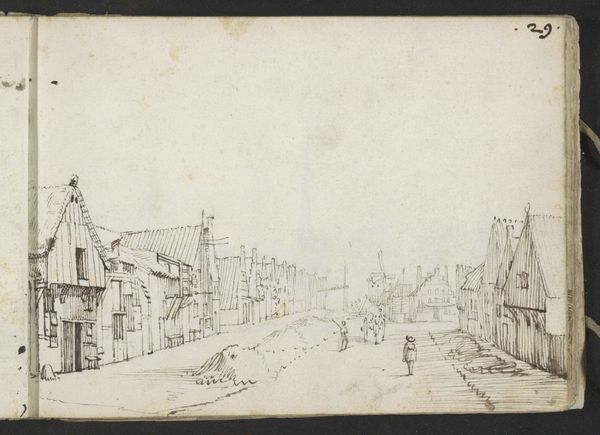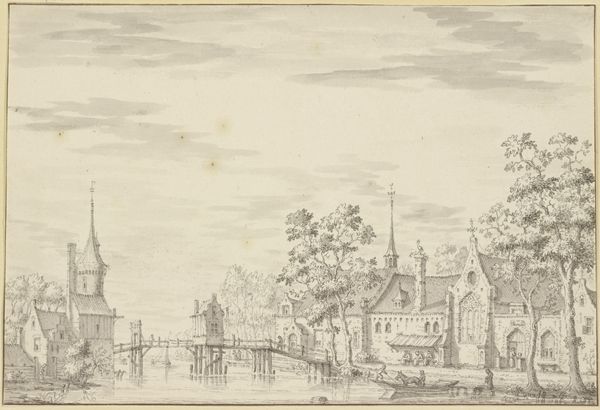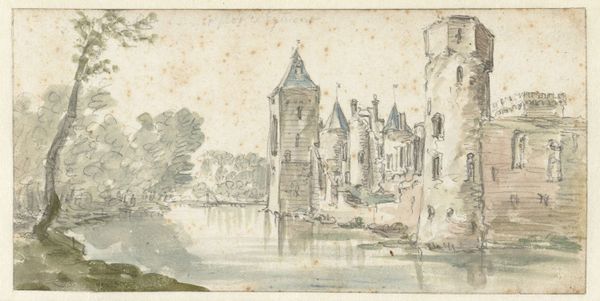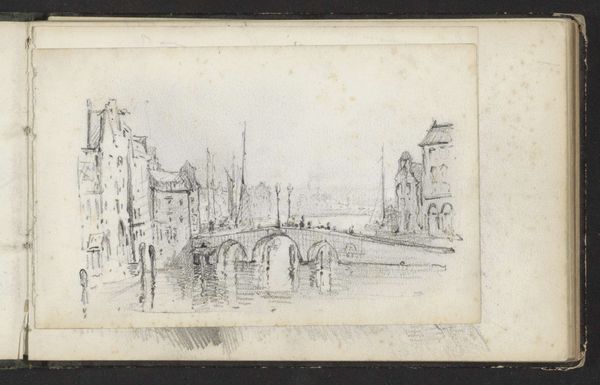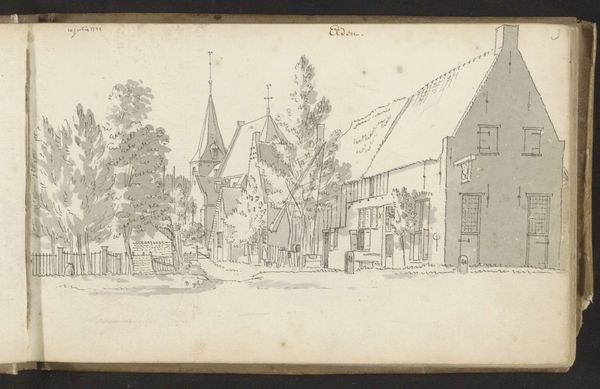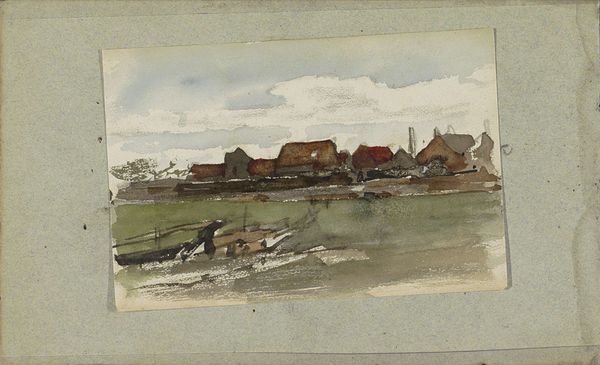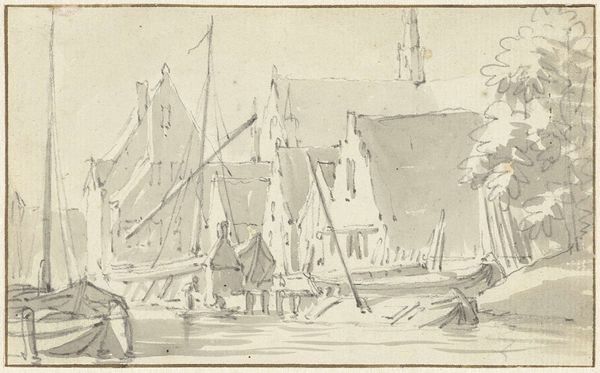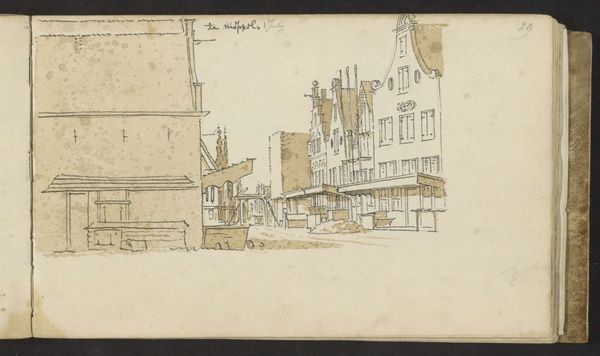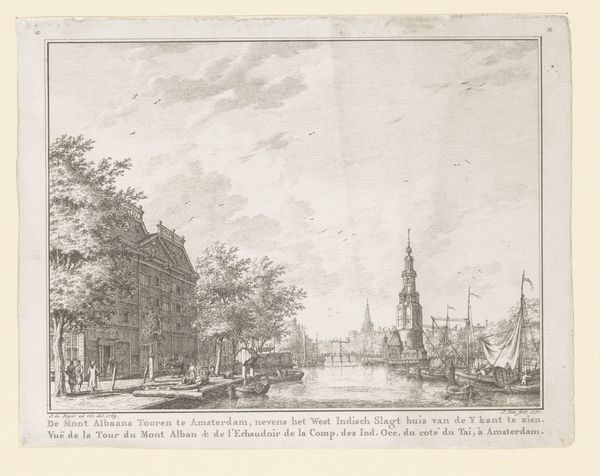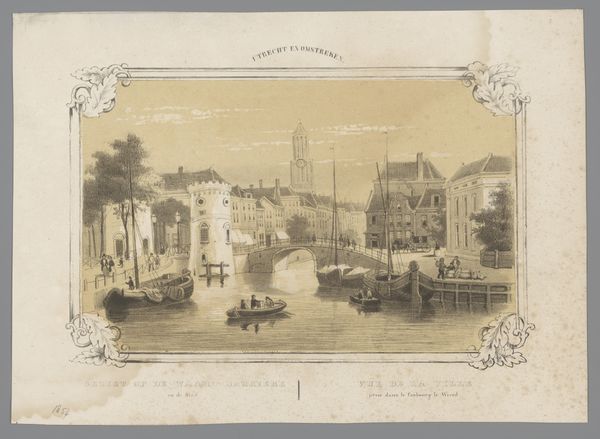
watercolor
#
dutch-golden-age
#
landscape
#
watercolor
#
coloured pencil
#
genre-painting
#
watercolor
Copyright: Rijks Museum: Open Domain
Editor: This watercolor piece, "Pakhuizen aan een kade" by Willem (II) Troost, painted sometime between 1822 and 1893, has a certain airy, unfinished quality. It’s essentially a sketch, a glimpse of warehouses along a quay. I find it compelling despite its simplicity. What do you make of it? Curator: What interests me most is how this watercolor challenges our traditional understanding of art as solely residing in 'finished' oil paintings intended for exhibition. We must consider the material reality of 19th-century artistic production. Watercolors were cheaper, faster, easily transportable – ideal for documenting the world. Notice the quick, suggestive brushstrokes; it's less about replicating a scene and more about capturing a specific atmosphere. Think of it as a kind of artistic labor – rapidly transforming the observed world into portable visual information. Editor: So you’re saying the 'unfinished' quality is part of its purpose, dictated by the material constraints? Curator: Exactly! And also, let's not divorce this from its social context. Who was Troost? Who was his audience? Was this a study for a larger work, or was the act of creation, the making, an end in itself? The materiality of the watercolor points us toward these questions of process, labor and intended consumption. The Dutch Golden Age legacy implied by some labels, doesn't represent, to my eye, it's function here. Editor: I hadn’t considered the speed and portability aspects of watercolor within a larger framework of labor and consumption. Curator: Seeing it that way can challenge how we value different art forms. What was considered "high art" then and what does it mean to us today? Editor: I guess I’ll be looking at watercolors differently now. Thinking about not just the image, but the materials and process behind it and how those connect to larger social and economic forces. Thanks!
Comments
No comments
Be the first to comment and join the conversation on the ultimate creative platform.
